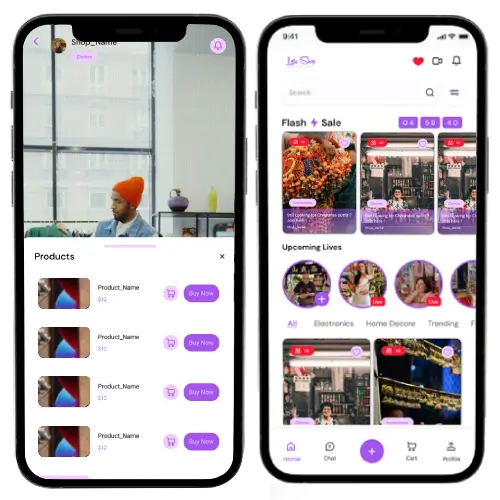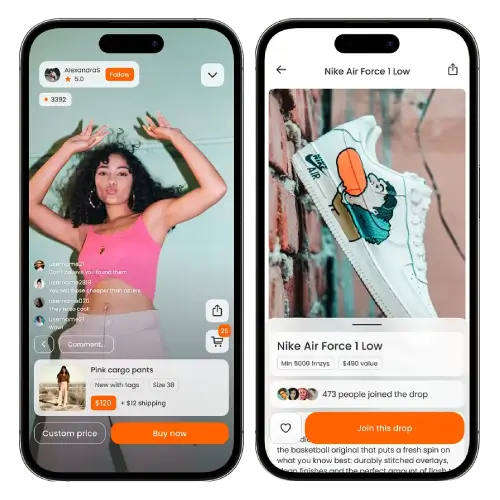Whatnot Clone
Whatnot Clone solutions offered by Suffescom allow you to streamline the development process while reducing costs. We build customizable shopping platforms like Whatnot to make your brand shine.
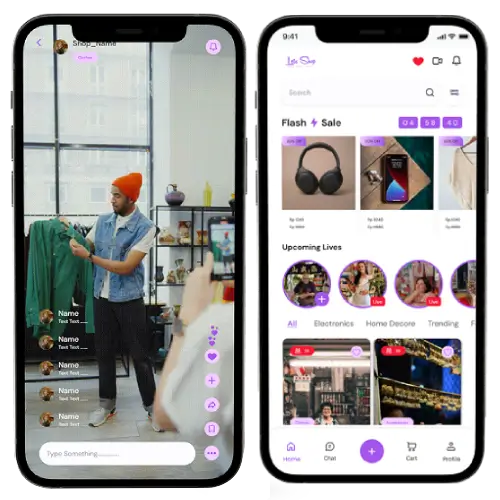
Whatnot is the largest live shopping platform in the US, UK, and Europe. It connects millions of active users through a single digital space. The platform supports both commerce and community interaction.
It offers a wide selection of products across multiple categories. These include beauty, bags, comics, sneakers, coins, and vintage vinyl. Additionally, it covers over 250 categories such as electronics, fashion, sports cards, jewellery, and plants. This structure delivers a reliable, engaging, and community-focused shopping environment.
Build a next-gen platform for immersive shopping experiences.
Live stream shopping isn’t just another passing trend. It’s quickly becoming a preferred way for niche communities and collectors to shop, trade, and connect. If you’ve been considering expanding your digital commerce portfolio, a Whatnot clone is worth a closer look. Here’s why:
Live commerce platforms are seeing steady growth. More buyers are drawn to real-time, interactive shopping experiences, and sellers want instant feedback. The Whatnot clone helps you to take advantage of this booming trend early.
Another reason is the flexibility in generating revenue. Beyond basic transaction fees, you can offer premium seller accounts, featured listing spots, or in-app promotions. This boosts profitability and diversifies your income sources. This is something every business could use in today’s unpredictable market.
Emphasize real-time features, community building, and personalized interactions. This enhances user reviews, feedback loops, and direct interaction. A Whatnot clone offers dynamic, community-driven experiences that boost engagement and sales.
Building a platform from scratch takes time and resources. A Whatnot Clone solution provides a proven framework, which means the application can be launched easily. Since it’s customizable, you can adjust features and branding to fit your target market.
While the big platforms chase mass audiences, niche markets often get overlooked. That’s where a Whatnot clone shines. It allows you to build communities around interests such as rare sneakers, vintage comics, or trading cards. It offers a clear edge in a space where passionate audiences are eager for better options.
Create a global reach and fuel revenue with whatnot clone solutions.
Discover the cutting-edge technologies that we use for developing robust, secure and scalable live shopping platforms like Whatnot.
We use cutting-edge technologies like Flutter and React Native. Create a user-friendly interface for smooth navigation and take the user experience to the next level.
Build a robust backend with languages like Node.js or Python. The app like Whatnot, can effortlessly handle the increasing number of users and growing transactions.
We implement the advanced live streaming protocols like RTMP or WebRTC. Allow the users to enjoy high-quality and flawless streaming on any device.
We host the Whatnot Clone app on reliable cloud platforms like AWS or Google Cloud. Provide a scalable and secure environment to let your app adapt to business growth.
Our team connects platforms like Whatnot with payment gateways like Stripe or PayPal. Let the users make secure and hassle-free payments with multiple options.
Following a proven and clear roadmap designed by our Whatnot Clone App Development company, you can turn your live-selling app ideas into scalable and profitable business platforms.
1
This phase involves understanding customer needs, conducting competitive analysis, profiling customers, identifying trends, and interpreting consumer data. This establishes a strategic foundation to develop a shopping platform like Whatnot that is focused on results.
2
After collecting market insights, designing an intuitive and appealing interface is mandatory. A user-centric UI/UX design improves navigation, refines user interaction, and supports smooth live shopping experiences. This directly impacts engagement rates and strengthens the overall value proposition of any Whatnot Clone App Development project.
3
After finalizing the appealing design, select the right technology stack. The chosen tools and frameworks determine the app’s operational stability, speed, and ability to handle increasing traffic. Proper selection at this stage ensures long-term performance efficiency for live shopping platforms like Whatnot.
4
This is where the core of your app is built. Backend development handles data, user accounts, product listings, and real-time video streaming. APIs connect your app with payment systems, analytics, and other essential services
5
Before launch, thorough testing finds and fixes bugs or issues. This step ensures your Whatnot Clone App works smoothly and delivers a seamless experience to users.
6
Finally, the application goes live in this last phase. But the work does not end here. After that, continuous support and updates are needed to secure the application and respond to user feedback. This is crucial for the long-term success of the Whatnot clone development.
Explore the key future trends that are transforming live shopping platforms like Whatnot. See how a reliable clone app development company help you grow, keep customers engaged, and build profitable online stores:
A Whatnot clone can easily be monetized, including numerous strategies such as commission on transactions, premium services to sellers, and advertising within the app. Here are the key monetization strategies that are usually followed:
Platform owners charge a commission on each sale made through the platform. This helps align platform success with sellers' success, creating a genuine and scalable income model that directly impacts sales volume.
Some platforms charge sellers a fee to list their products or offer premium subscription plans. These plans usually include perks such as product visibility, access to detailed sales analytics, or extra promotional tools. This helps app owners earn predictable revenue while growing their business.
Integrating virtual gifting features enables viewers to support their favorite sellers or hosts. These microtransactions can generate significant additional income, incentivizing high-quality live content and fostering community engagement.
Monetizing through sponsored streams or promoted product placements allows brands and sellers to reach targeted audiences. This includes in-stream ads, featured listings, or brand partnerships, adding diversified revenue without disrupting the shopping experience.
Selling anonymized market insights or enhanced analytics to sellers and brands generates income. These insights help sellers optimize inventory, leading to cost savings.
The cost to develop a shopping platform like Whatnot can range between $5,000 and $ 25,000. However, the end price totally depends on the complexity of features, number of platforms, technology stack, and design. High-quality live streaming options can also increase the cost.
The cost also depends on the expertise of the development team. The hourly rates of developers can vary based on the location. Costs can vary based on backend development, live-streaming quality, and post-launch services. Choosing the right partner helps balance quality with a reasonable budget.
Check out our past projects and see how we've helped businesses like yours succeed!

Thinking of satisfying your taste with something new? Use Chilis and experience the seamless way of ordering food with cutting-edge animations and easy payment methods. This app allows users to access delicious restaurant menus on the application easily. It also helps in tracking the order in real time with accurate updates.
Avg. Ratings
Downloads


Medicover Online is helpful in eliminating the hustle at hospitals by providing medical-related support online. With this app, users can book an online appointment, reschedule their booked appointment, and cancel it anytime. Built with a dynamic tech-stack and cutting-edge UI/UX, it is compatible with anybody.
Avg. Ratings
Downloads
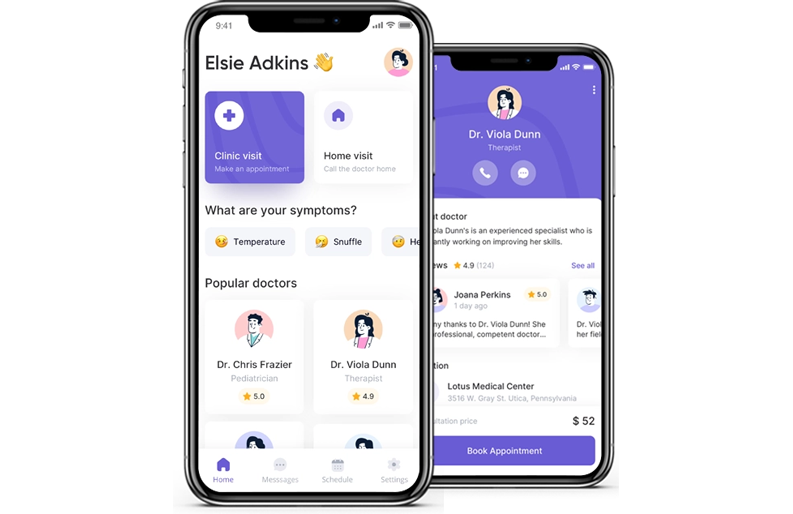

It is a digital wallet app that was pioneered with the motive of managing expenses and spending money. It is programmed on a dynamic tech stack that makes it accessible to 50+ million merchants across 176 countries. It is also accepted in any ATM for quick and easy money transactions.
Avg. Ratings
Downloads
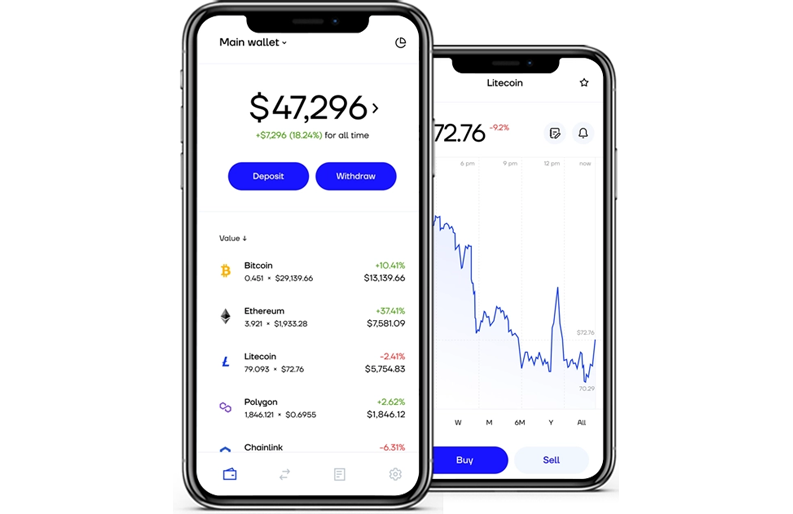

With the B8ak on-demand app, get solution for all your home care needs with just a click. Select from a list of technicians, like electricians, plumbers, manicurists, cleaners, and more. Select your preferred time slot and schedule your booking as per your convenience. Get solutions to all your home needs with one app.
Avg. Ratings
Downloads

Doge Dash is an adventurous 2D platform game centred around the main character Dash. Players must complete multiple challenges, cross obstacles and navigate platforms to reach the final stage. The players that reach the end get to monetize their efforts in the form of HELLO rewards.
Avg. Ratings
Downloads

1 Time Shop is designed to be one platform that offers all kinds of on-demand services, such as payments, taxi services, food delivery, pick-up and drop and grocery shopping. The app is designed with features like GPS tracking, quick vendor verification, and a feature-rich admin panel for advanced analytics.

Unity is an entertainment app for video viewing and creation and offers the world’s largest sound selection and multiple movie effects for videos. The platform has different features such as Giphy in green screen, AI-powered avatars, Disney text-to-speech voices, live option for polls, Q/A and much more.

Radisson Hotels is a globally recognized hotel chain headquartered in the United States. The web platform assists customers in booking a room, book meeting space, find deals of the day, availing of membership rewards, and connect with the support team.

Universal Monsters is a website selling special monster apparel that infuses NFTs with clothing. They embed special NFC chips in their hoodies and beanies that can be scanned to access the hidden NFT. The full suite of features of the store is designed using advanced tech stacks like Ethereum, Nodejs and Metamask.








Class Central is a fantastic online platform that caters to the needs of book lovers who are passionate about learning. It is a one-stop shop for online courses covering a wide range of subjects, all in one place. With this amazing application, users can effortlessly register, browse, and join any online course hosted by a variety of instructors.



Enjoy a seamless trading experience within the boundaries of Islamic values. Witness the impressive fusion of tradition and technology with a comprehensive set of financial tools, making trading simple, easy, and secure.
Build a budget-friendly app to reach the milestone of success.
Discover how we delivered excellent outcomes for our clients and made their vision a reality. We continue to craft the success stories of our global clients.
View TestimonialIt might take less time to develop a basic app like Whatnot with essential features. But an app with advanced features can take longer to develop. These apps provide live streaming and offer personalized recommendations to users. It can take around 6 to 9 months or longer to develop an app with advanced features. We ensure to meet your project deadlines and assist you 24/7 to achieve your business goals.
The cost of developing a Live Shopping app Like Whatnot depends on the number of features. It also depends on the complexity of the design and technologies used for development. We charge you with an estimated cost range starting from $5,000 and it can go upto $25,000. But the development costs also depend on your project requirements.
Yes. You can choose from existing features in our whatnot clone script or add new features. The live shopping app like whatnot can be customized to suit your business goals. Unique features of the app can help your brand stand out. It helps enhance the user experience and improve your brand image.
We implement the best security practices for Whatnot clone app development. Our expert team does regular security checks and handles data encryption. The app is integrated with secure payment gateways to keep the user’s information in safe hands. This ensures convenient and hassle-free payments for the buyers.
We utilize a scalable live streaming technology to develop platforms like Whatnot. This enables your platform to perform well while handling the increasing number of users. It allows users to enjoy high-quality streaming on all devices. This makes our technology different from those of other mobile app development companies.
Yes. Our expert developers use frameworks, like Flutter and React Native to create Whatnot-like shopping platform. This enables a smooth and efficient launch on both Android and iOS platforms. We build a single codebase for Android and iOS. This saves time and money in development while ensuring a better user experience.
We offer 24/7 support and maintenance after the launch of Whatnot Clone. Our expert team fixes the bugs and adds new features to the app. We ensure that your app runs smoothly and keeps the user’s data secure.
Fret Not! We have Something to Offer.
